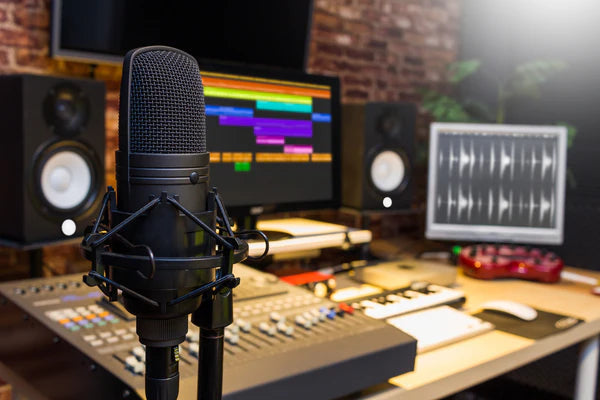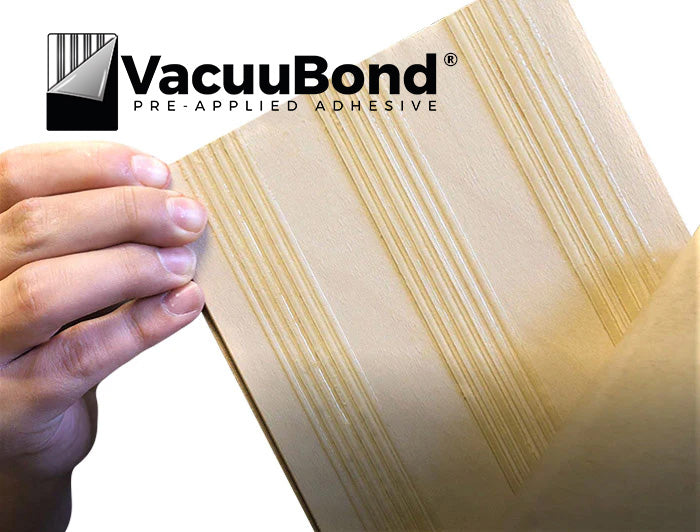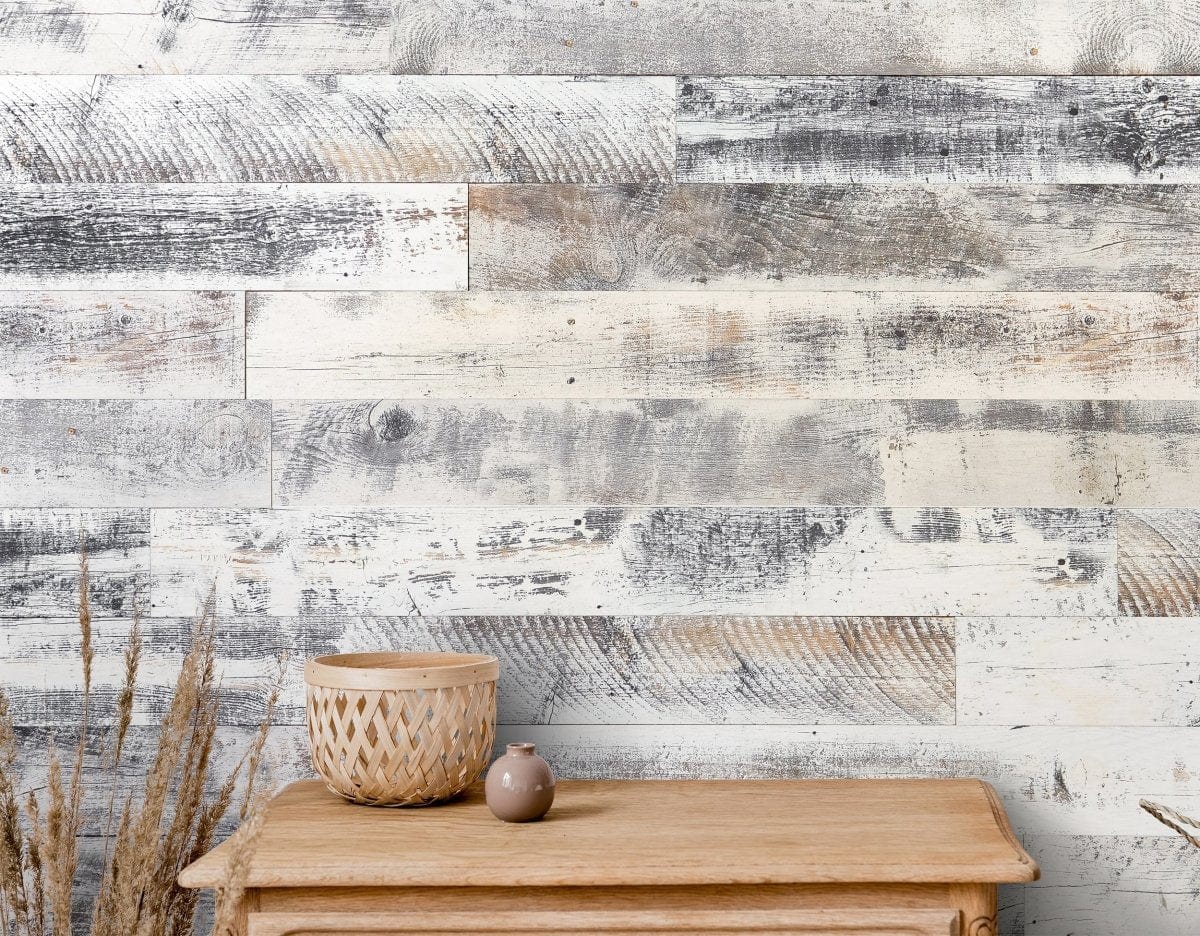Your Cart is Empty
Get your first 3 samples FREE! Use code: 3FREESAMPLES at checkout!
Get your first 3 samples FREE! Use code: 3FREESAMPLES at checkout!
Shop Products
What's Trending
Resources
Wallplanks® Blogs
The Best Top Coat Wood Finish
Pre-Applied Adhesive
Wallplanks® Blogs

View Blogs >
The Best Top Coat Wood Finish

Read More >
Pre-Applied Adhesive

Read More >
How to Soundproof a Room: The Ultimate Guide
April 27, 2025 5 min read

In today's fast-paced world, creating quiet, peaceful environments has become essential for both personal well-being and professional productivity. Whether you're setting up a home office, building a music studio, or simply trying to enjoy your home without distractions, soundproofing is the key to serenity.
Understanding the Basics of Soundproofing
Before diving into techniques and tools, it's crucial to understand how sound behaves. Sound travels in waves through air, solids, and liquids. When these waves hit surfaces like walls, floors, and ceilings, they can reflect, transmit, or be absorbed.
There are two main types of noise you might want to reduce:
-
Airborne noise: Voices, music, television, barking dogs
-
Impact noise: Footsteps, knocking, furniture movement
Effective soundproofing requires tackling both types by minimizing sound transmission and maximizing sound absorption.
Step 1: Inspect and Identify Problem Areas
Start by analyzing your room. Identify where most sound is coming in or going out. Focus on:
-
Walls: Thin walls allow more sound to pass through.
-
Doors: Gaps around doors are common sound leak areas.
-
Windows: Glass transmits sound easily unless treated.
-
Floors and ceilings: Especially critical in multi-level buildings.
Once you've pinpointed problem areas, you can move forward with specific strategies.
Step 2: Seal Gaps and Cracks
Sound is like water – it finds any gap to slip through. Sealing these areas provides an immediate boost in sound isolation.
Tools to Use:
-
Weatherstripping tape: Apply around doors and windows
-
Acoustic caulk: Use to seal cracks and gaps in drywall, baseboards, and window frames
-
Door sweeps: Prevent sound leakage under doors
Sealing alone won't fully soundproof a room, but it's a foundational step.
Step 3: Upgrade the Walls
Walls are the largest surfaces in a room and contribute significantly to noise levels. Here are some wall treatments that reduce sound transmission:
1. Add Mass with Dense Materials
-
Use multiple layers of drywall or mass-loaded vinyl (MLV) to increase wall density and block sound.
2. Use Resilient Channels
-
These metal channels are mounted to studs and decouple drywall from the wall structure, reducing vibration transmission.
3. Install Acoustic Panels
-
Foam, fabric, or wood panels absorb sound and reduce echo. They are ideal for home studios or offices.
4. Decorative Wall Planks
-
High-performance wall planks, like those from Wallplanks, offer both aesthetic appeal and sound absorption. Engineered from dense, natural materials, they help dampen sound while enhancing your interior design.
Step 4: Address Floors and Ceilings
In multi-level buildings, sound travels vertically through floors and ceilings. Here are strategies to combat this:
Flooring Soundproofing Solutions:
-
Area rugs with thick pads: Help absorb impact noise
-
Interlocking floor mats: Great for home gyms or studios
-
Underlayment materials: Use rubber or cork under flooring for added insulation
Ceiling Soundproofing Solutions:
-
Drop ceilings: Install a suspended ceiling with acoustic tiles
-
Resilient channels and drywall: Same as wall treatment, applied to ceiling
-
Acoustic foam panels: Effective in studios or media rooms
Step 5: Soundproof Doors and Windows
Doors and windows are notoriously poor at blocking sound.
Soundproofing Doors:
-
Replace hollow-core doors with solid-core options
-
Use door sweeps and weatherstripping to close gaps
-
Add acoustic door panels for maximum insulation
Soundproofing Windows:
-
Install acoustic-grade windows or use double-glazing
-
Add soundproof curtains or window inserts
-
Apply clear acrylic window panels using magnetic seals
Step 6: Use Sound-Absorbing Furnishings
Once structural soundproofing is in place, furnishings can further reduce noise by absorbing sound waves.
-
Heavy drapes and curtains: Block external noise
-
Bookshelves filled with books: Act as mass barriers
-
Upholstered furniture: Sofas and chairs absorb ambient noise
-
Wall-mounted tapestries: Both stylish and functional
Step 7: Incorporate Acoustic Design
Beyond soundproofing for privacy, acoustic design improves the quality of sound within a space by reducing echo and reverberation. This is essential for home theaters, podcast studios, and conference rooms.
Best Practices:
-
Break up flat surfaces with textured materials
-
Mix soft and hard surfaces to balance absorption and reflection
-
Use rugs, curtains, and furniture strategically
Acoustic enhancement is where functionality meets design, and Wallplanks excels in this area by offering beautifully crafted, dense wall materials that serve dual purposes.
Step 8: Choose the Right Wall Finishes
Wall finishes contribute significantly to your soundproofing goals. For long-term performance, opt for materials designed with acoustic properties.
Why Wallplanks?
Wallplanks products are manufactured in the U.S. by From the Forest, LLC, with raw materials sourced from North America. Founded in 2017 by industry expert Tryggvi Magnusson, Wallplanks was born from a desire to provide beautiful, durable, and high-performing wall solutions that are easy to install and instantly transform any space.
Key benefits of Wallplanks for soundproofing:
-
Engineered Wood Composition: Provides mass and density to absorb and block sound
-
Tongue-and-Groove Installation: Ensures tight fits and fewer sound leaks
-
Easy DIY Installation: No need to hire professionals
-
Stylish Options: Combine acoustic performance with interior design aesthetics
Whether you're aiming for rustic charm or modern minimalism, Wallplanks enhances your space visually while helping to control unwanted noise.
Step 9: Consider Professional Help
Some soundproofing solutions can be DIY, while others might require expert installation—especially when electrical work, structural modifications, or heavy materials are involved.
Hiring a soundproofing consultant or acoustic engineer may be a smart investment if you:
-
Run a commercial studio
-
Need to comply with building codes
-
Live in a densely populated urban area
Professionals can run sound tests and recommend tailored solutions based on your space.
Step 10: Maintain and Upgrade Over Time
Soundproofing is not always a "one-and-done" process. As your needs change or as you bring in new technology and furnishings, you may need to reassess your space's acoustics. Here are some tips:
-
Recheck seals around doors and windows annually
-
Inspect wall materials for wear or damage
-
Add more acoustic treatment as needed when usage changes (e.g., turning a bedroom into a recording studio)
Maintaining soundproofing efforts ensures your environment remains peaceful and effective for its intended use.
Final Thoughts
Knowing how to soundproof a room effectively gives you control over your environment, enhancing everything from relaxation and sleep to focus and creativity. With the right combination of structural upgrades, furniture adjustments, and premium materials, any room can be transformed into a quieter, more productive space.
Wallplanks is proud to offer wall solutions that are not only visually stunning but also practical in reducing noise. Our U.S.-manufactured products are a testament to craftsmanship, innovation, and sustainability. Whether you're tackling a DIY home project or designing a high-performance studio, our wall planks deliver unmatched results in both style and function.
Ready to Transform Your Space?
If you're serious about soundproofing and elevating your interior design, choose Wallplanks. Our easy-to-install, high-quality wall products are designed with both beauty and performance in mind.
Explore our collection and discover how our expertly crafted wall finishes can help you create a quieter, more serene space.

